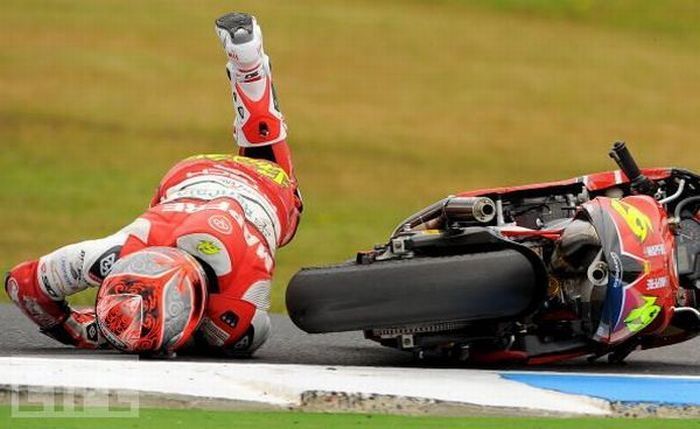|
|
Sportbike Accidents
|
The combination of rider position, location of the engine and other heavy components, and the motorcycle's geometry help maintain structural integrity and chassis rigidity, and determine how it will behave under acceleration, braking, and cornering. Correct front-to-rear weight distribution is of particular importance to the handling of sport bikes, and the changing position of the rider's body dynamically changes the handling of the motorcycle. Because of the complexity of modeling all the possible movements of different sized riders, to approach perfect tuning of a motorcycle's weight distribution and suspension is often only possible by having a bike customized or at least adjusted to fit a specific rider. Generally, road racing style sport bikes have shorter wheelbases than those intended for more comfortable touring, and the current trend in sport bike design is towards shorter wheelbases, giving quicker turning at the expense of a greater tendency for unintentional wheelies and stoppies under hard acceleration and braking, respectively.
Motorcycles have a higher rate of fatal accidents than automobiles. United States Department of Transportation data for 2005 from the Fatality Analysis Reporting System show that for passenger cars, 18.62 fatal crashes occur per 100,000 registered vehicles. For motorcycles this figure is higher at 75.19 per 100,000 registered vehicles – four times higher than for cars. The same data show that 1.56 fatalities occur per 100 million vehicle miles travelled for passenger cars, whereas for motorcycles the figure is 43.47 – 28 times higher than for cars. Furthermore for motorcycles the accident rates have increased significantly since the end of the 1990s, while the rates have dropped for passenger cars.
|
|









